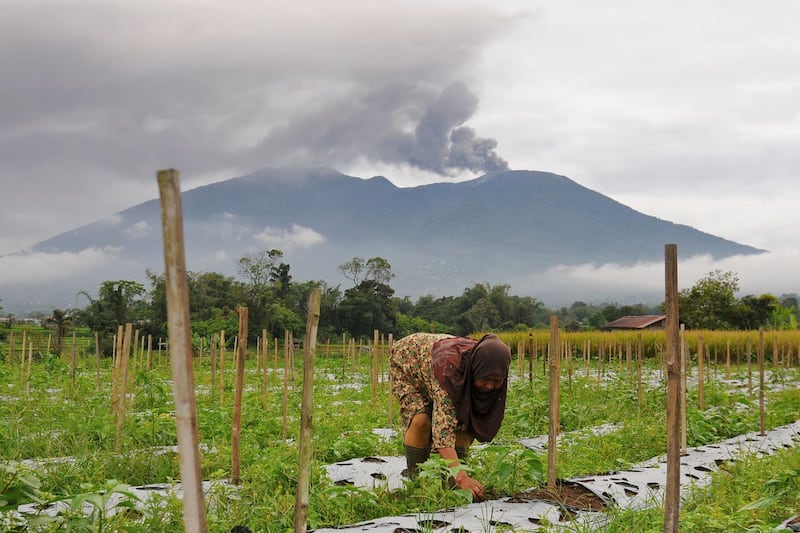Indonesian authorities halted the search for 12 climbers on Monday after the Mount Marapi volcano erupted again, unleashing a new burst of hot ash as high as 2,629ft (800m) into the air, officials said.
The bodies of 11 climbers were recovered earlier in the day – during the search for those missing – but attempts to relocate them were hindered by the renewed activity, West Sumatra’s Search and Rescue Agency head Abdul Malik said.
The search operation will resume once conditions improve, he added.
A video released by the agency showed rescuers moving an injured climber on a stretcher from the mountain to a waiting ambulance.
Marapi initially erupted on Sunday, spewing clouds of hot ash.
The volcano has stayed at the third highest of four alert levels since 2011, a level indicating above-normal volcanic activity, prohibiting climbers and villagers from going within 1.8 miles (3km) of the peak, said Hendra Gunawan, head of the Centre for Volcanology and Geological Disaster Mitigation.
“This means that there should be no climbing to the peak,” he said, adding that climbers are only allowed below the danger zone, “but sometimes many of them broke the rules to fulfil their satisfaction to climb further”.
About 75 climbers had started to make their way up the nearly 9,480ft (2,900m) mountain on Saturday and became stranded.
Authorities rescued 52, including three on Monday.
Eight of those rescued on Sunday were rushed to hospital suffering from burns and one had a broken limb, said Hari Agustian, an official at the local Search and Rescue Agency in Padang, the West Sumatra provincial capital.

All of the climbers had registered at two command posts or online through West Sumatra’s conservation agency before they proceeded with their climb, Mr Agustian said.
Asked about the total number of people who may be stranded, he said it could not be confirmed because some may have taken illegal routes up the mountain and residents could have been also in the area.
Marapi spewed thick columns of ash as high as 9,800ft (3,000m) in Sunday’s eruption, and hot ash clouds spread over several miles.
Nearby villages and towns were blanketed by tons of volcanic debris. Volcanic dust and rain smeared the faces and hair of evacuated climbers, according to a video on social media.
Falling ash blanketed several villages and blocked sunlight, and authorities distributed masks while urging residents to wear goggles to protect them from volcanic ash.
About 1,400 people live on Marapi’s slopes in Rubai and Gobah Cumantiang, the nearest villages about 3.1-3.7 miles (5-6km) from the peak.

Mr Gunawan said Sunday’s eruption was not preceded by a significant increase in volcanic earthquakes.
Deep volcanic earthquakes were only recorded three times between November 16 and Sunday, while the deformation equipment or tiltmeter on the peak showed a horizontal pattern on the radial axis and a slight inflation on the tangential axis.
“This shows that the eruption process is taking place quickly and the centre of pressure is very shallow, around the peak,” he said.
Marapi has been observed regularly erupting since 2004 with a gap of two to four years, Mr Gunawan added.
“Marapi eruptions are always sudden and difficult to detect using equipment because the source is near the surface. This eruption was not caused by the movement of magma.”
Marapi has been active since an eruption in January that caused no casualties. It is among more than 120 active volcanoes in Indonesia, which is prone to seismic upheaval due to its location on the Pacific Ring of Fire, an arc of volcanoes and fault lines encircling the Pacific Basin.








